Decoupage coffee cans: interesting ideas and a master class
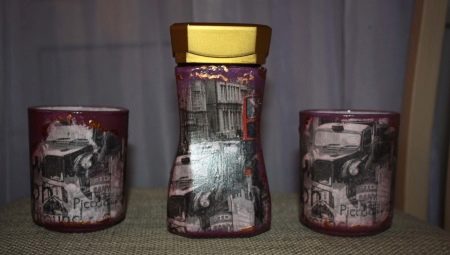
Drinking a cup of coffee in the morning isn't just about enjoying a delicious, invigorating drink. For many people, such an event is almost a sacred act. It is recommended to decorate it at a decent level, with all the necessary entourage. Must be present: a beautiful teapot, a roomy Turk, exclusive dishes and, of course, a spectacular jar where ground coffee is stored. It is quite possible to make it beautiful, original colors and textures with your own hands.
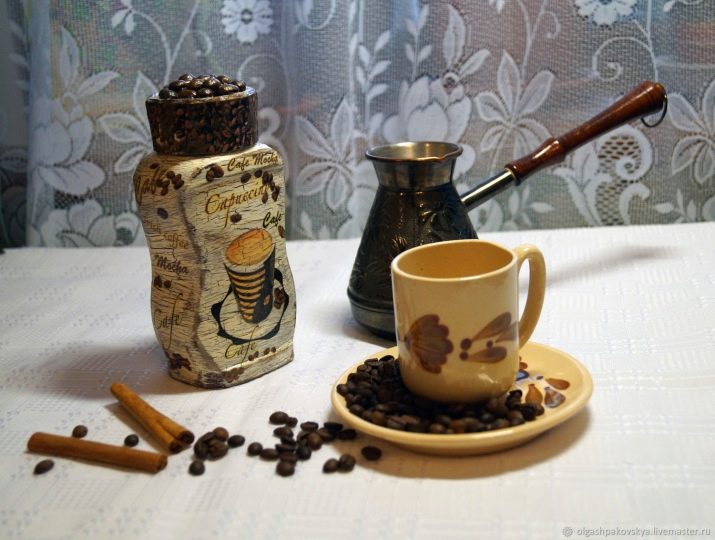
Preparation for decoupage
A master class on creating an original coffee product is not difficult. You will need any glass container that is easy to find. You can also decoupage coffee cans. Glass jars are usually more readily available though, so it's best to use them for the job. You will also need acrylic paint, it is non-toxic, it is optimal for this kind of operations. The paint can be taken in several colors, such as brown, white and yellow. You will also need:
- brushes (wide and thin);
- napkins with images you like;
- scissors;
- knife, blades;
- cotton swabs;
- acetone or paint thinner (to remove old glue);
- coffee beans;
- glue supercement "Secunda";
- glue gun;
- rope;
- figurines cut from plywood (heart, coat of arms of your favorite city, ideas may be different);
- cotton rag.
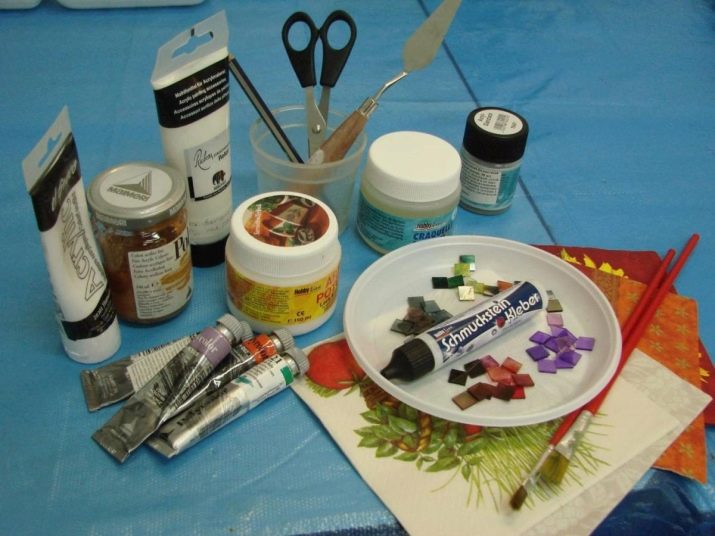
The process should start by removing the label. This can be done simply: put the jar in a saucepan with boiling water, "boil" it there for about 10 minutes. After that, the label can be easily scraped off with a knife or blade, and the remaining glue can be removed with a cloth soaked in acetone or solvent. After the completion of the operation, a jar is recommended wipe and dry.
After the preparatory manipulations, white paint is prepared, brown is added to it, this will be more in harmony with the coffee theme.
After painting, the treated item dries for 10-12 hours.
Container decoration
During this time, you can solve the issue with illustrations for decoupage. Napkins with certain elements and motives are selected, they are carefully cut... The layers are separated from the elements, only the first of them remains, on which the image is applied.
Previously, it is recommended to draw a plan diagram by hand on a sheet of paper, from which it will be clear where and what elements will be located exactly.
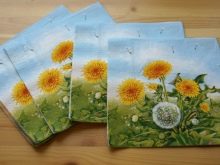
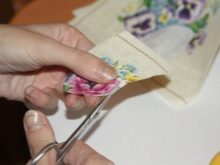
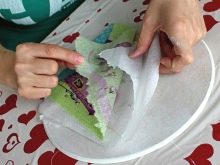
Napkins are created both independently, on a printer (black and white and color), and using special templates, they can be found in specialized stores. In the first case, you can create the desired plot depending on your imagination, but in accordance with the interior and stylistic direction of the kitchen. You can find a very large selection of various applications in online stores, there are images of very good quality, there is an opportunity to choose something even for the most sophisticated taste.
You can create napkins for cutting on special, especially favorite topics. Also, collages are often made in the spirit of paintings by the French painter Henri Matisse, where there are various bright colors. The following topics are especially popular:
- children's;
- in the style of Provence;
- zoological;
- vegetable;
- marine;
- floral;
- feline.
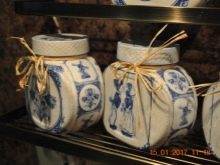
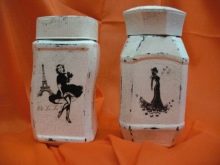

Using a thin brush and glue, the cut out elements are fixed on the surface of the glass container... Important, so that the glue lays down in an even layer and there are no deformations and swelling of the paper image. After completing the operation, be sure to wait 5-6 hours until everything is dry.
It should be noted that when the paint is applied, bulges, "bubbles" may form, where air will be. Therefore, apply the adhesive carefully and evenly.
And after applying the applique, it will be neatly necessary flatten so that the image is not distorted.
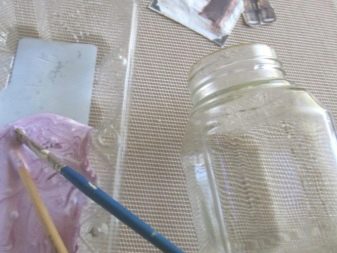

In this operation, some skill is important, which gradually comes with experience. The image may tear when wet, therefore it is necessary to act as carefully as possible and not to rush.
During the drying time of the processed can, you can think about the decor of the lid. It will need to be rinsed, dried and degreased. After that, using a glue gun, coffee beans are applied to the surface.
This operation is simple, only the glue must be necessarily warmed up to the desired condition. The edges remain intact after processing.
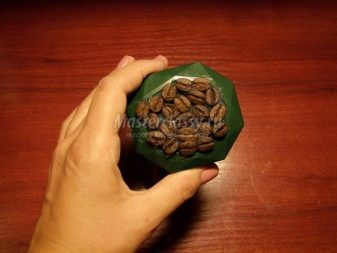
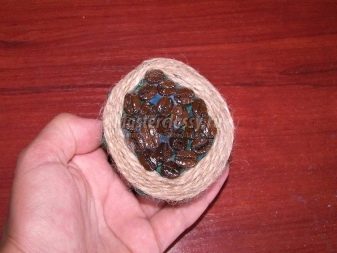
After the surface dries, the coffee beans are also fixed on the jar, using the same glue gun. After the completion of all operations, the treated surfaces are coated with varnish, preferably glossy. After the product has dried (it is best to wait a day, putting the jar on the street or balcony), the glue gun and twine are again taken, decoration is made around the surface of the lid of the attached grains.
Using Secunda supercement glue, a piece of plywood “heart” (or other subject matter) is attached. A similar element can be made original, funny, then it will attract more attention. The new hand-made jar can become an organic addition to the interior; it will become an integral decorative element of any table in the kitchen.
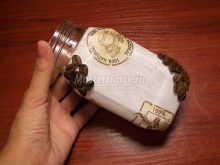
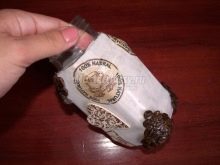
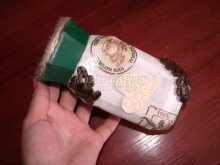
A coffee can makes a great vase. All details can be found in the video below.








